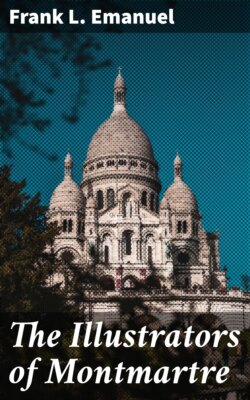The Illustrators of Montmartre

Реклама. ООО «ЛитРес», ИНН: 7719571260.
Оглавление
Frank L. Emanuel. The Illustrators of Montmartre
The Illustrators of Montmartre
Table of Contents
I. A. STEINLEN
II. CARAN D’ACHE
III. H. DE TOULOUSE LAUTREC
IV. PAUL BALLURIAU
V. FRÉDÉRIC VALLOTTON
VI. LOUIS MORIN
VII. CHARLES HUARD
VIII. J. WÉLY
IX. LOUIS MALTESTE
X. J.L. FORAIN
XI. CHARLES LÉANDRE
XII. CONCLUSION
Отрывок из книги
Frank L. Emanuel
Published by Good Press, 2021
.....
Steinlen is a prolific worker. First in importance among the many publications whose pages he has enriched comes the Gil Blas Illustré. It was Steinlen who initiated the idea of this Paris daily paper issuing a halfpenny supplement on Sundays containing feuilletons and poetry, illustrated with drawings to be reproduced in two or more colours. Since the year 1891, and until recently, the front and frequently other pages of this paper have consisted of splendid drawings by him, as a rule depicting some terrible or pathetic episode in the lives of the faubouriens or faubouriennes to whom we have already alluded. In every case a background, equally masterly and full of local character, has been introduced. This series of essentially modern subjects was occasionally varied by the appearance of a drawing such as the Chevalier à la Fée or Les Digitales, inspired by some mediæval incident or legend. These Steinlen would treat in an entirely different but equally successful manner—the style employed somewhat resembling that of another masterly designer, namely, Eugène Grasset. Of his more usual style to pick out such splendid drawings as his suicide in À l’eau, the terrible street fight in the Voix du Sang or Le Vagabond, L’Immolation, Pour les Amoureux et pour les Oiseaux, Marchand de Marrons or 14 Juillet, is but to recall hundreds of others equally worthy of special attention.
In 1895 the Gil Blas employed more colours in its reproductions, and Steinlen rose to the occasion with some daring colour schemes exemplified in La Terre Chante au Crépuscule, Le Poil de Carotte and many another drawing. Towards 1896 the range of his subjects noticeably widened.
.....